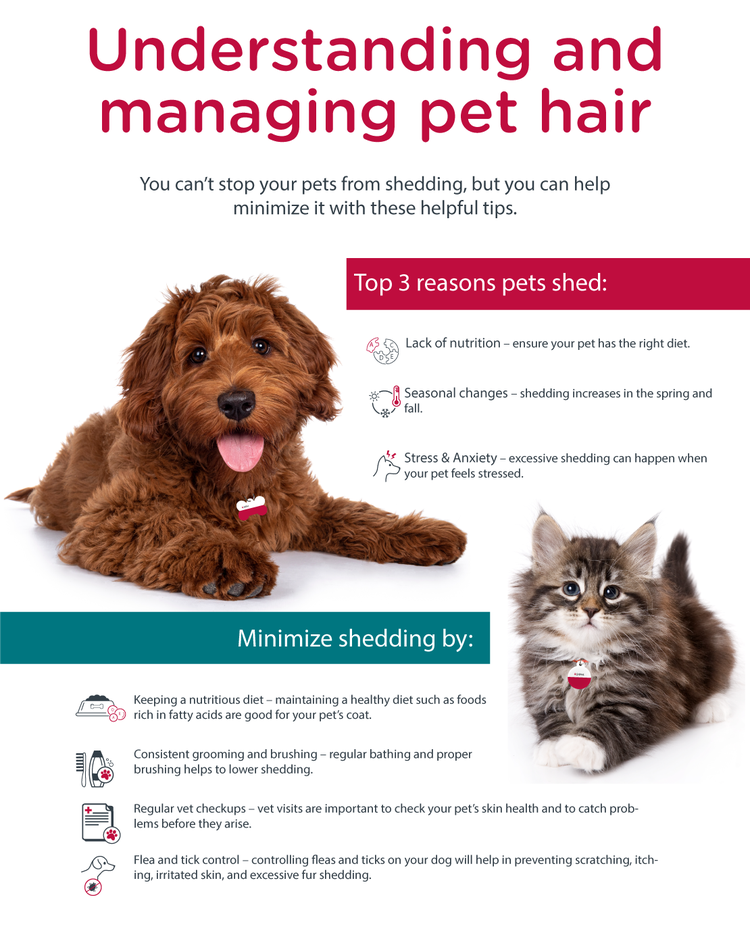Understanding why your pet sheds and how to manage it
Get the hairy truth on why your pet sheds.
By now, you’ve probably experienced it. Everywhere you look, you keep seeing hair clinging to different fabrics. No matter what you do, it never goes away. But when your cat or dog sheds, it’s a natural process necessary to maintain a healthy coat or a signal your pet is sending you a message. Fortunately, there are many ways to manage pet shedding and protect your home from the potential allergies and asthma it causes. We’ll share expert advice to help you understand why your pet sheds and the best ways to create a healthier environment for you and your lovable friend.
